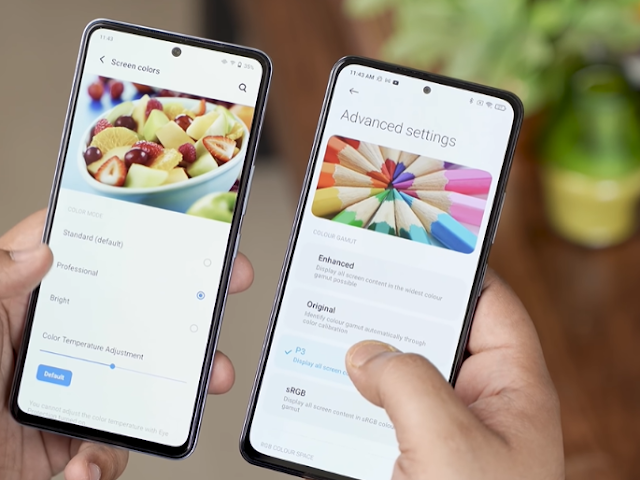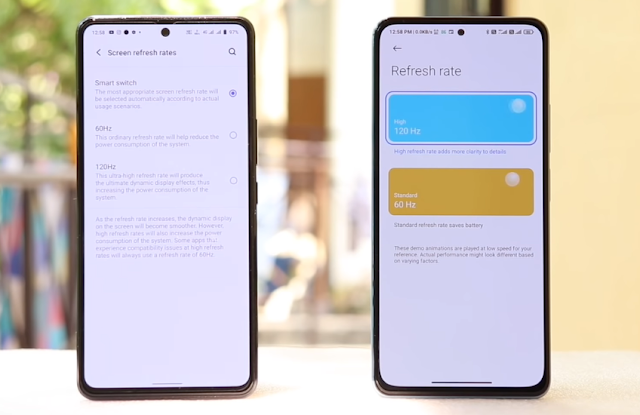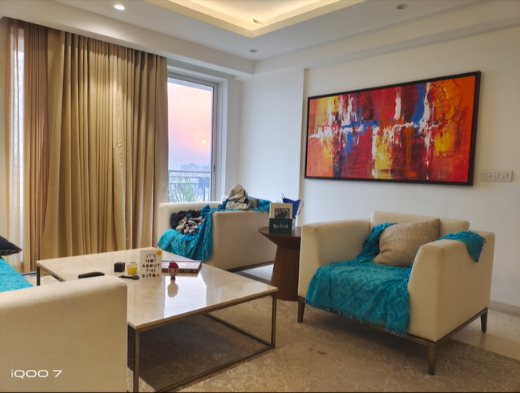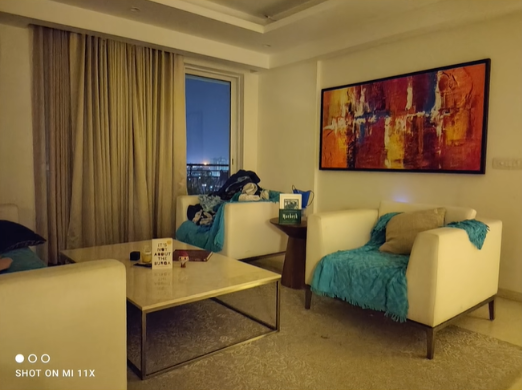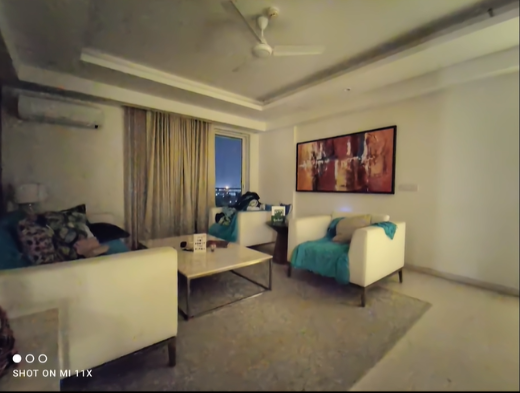Which is the better premium mid-ranger? Mi 11X or iQOO 7?
Xiaomi’s Mi 11X series has stormed the market with great specifications at their respective price segments i.e. the Xiaomi Mi 11X (Review) and the Xiaomi Mi 11X Pro. These smartphones offer great features at a lower price where the Xiaomi Mi 11X is the better pick of the two if you are on a tight budget. On the other hand, Vivo sub-brand iQOO has come up with the 7 series also.
The brand iQOO came to India last year in 2020 with the introduction of iQOO 3 that had great specifications at a great price and similarly, this year we have the iQOO 7 and the iQOO 7 Legend. The brand iQOO is focusing more on performance, so the iQOO 7 can be the next gaming smartphone in the premium mid-range segment.
Both smartphones have a lot of similarities like AMOLED display, Snapdragon 870 chipset, 48MP main camera, large batteries with support for fast charging, and much more. So will the iQOO 7 be the best smartphone to consider in the premium mid-range segment or will Xiaomi again rule this particular segment with the Mi 11X? Let’s find out this in the full comparison.
iQOO 7 vs Xiaomi Mi 11X Design:
Both the iQOO 7 and the Xiaomi Mi 11X have a glass sandwich design but the difference lies in the material used on the back. The Xiaomi Mi 11X has a glossy finish with Gorilla Glass 5 protection both on the front as well as on the back. The back has a reflective pattern when you tilt in different angles. There is a quad-camera setup to the top left with the Xiaomi 5G branding at the bottom.
On the other hand, the iQOO 7 has a matte textured finish on the back and it does also have a slightly reflective look to it and is easier to grip compared to the Xiaomi Mi 11X which has a glossy back that does catch a lot of fingerprints and smudges. The iQOO 7 has a triple camera setup in a rectangular module and talking about protection, there is Schott Xensation glass protection at the back.
Both the smartphones weigh the same around 196 grams but when it comes to thickness, the Xiaomi Mi 11X is 7.8mm compared to 8.4mm thickness on the iQOO 7. There is no IP rating present on the iQOO 7 as you have P2i coating only whereas the Xiaomi Mi 11X has an IP53 rating making it dust and water-resistant up to some extent.
Coming to the bottom of both smartphones, there is a USB Type-C port, a loudspeaker grille, a primary microphone, and a dual SIM card slot. None of them provide a hybrid slot or dedicated microSD card slot for storage expansion. There is no 3.5mm headphone jack either. On the top, both have a secondary microphone but the Xiaomi Mi 11X has an IR Blaster, and the secondary speaker also located there.
To the sides, both have a power button and volume buttons where the power button on the Xiaomi Mi 11X doubles up as a fingerprint scanner whereas the iQOO 7 has an in-display one. Overall, the build quality feels better on the iQOO 7 with the matte finish but if you want the IP53 rating and IR Blaster, then the Xiaomi Mi 11X could be a better option.
iQOO 7 vs Xiaomi Mi 11X Display:
Both the Xiaomi Mi 11X and iQOO 7 have larger punch-hole displays where the Xiaomi Mi 11X has a slightly larger 6.67-inches compared to 6.62-inches on the iQOO 7. Both these displays have a Full HD+ (1080×2400 pixels) AMOLED panel that supports a 120Hz refresh rate. The Xiaomi Mi 11X has a 360Hz touch sampling rate whereas the iQOO 7 has a 300Hz touch sampling rate.
Higher refresh rates on both displays ensure smoother scrolling through webpages, playing games, and also while multitasking also. Both these displays are quite bright and offer good visibility under direct sunlight and can go up to 1300nits of peak brightness. The color reproduction and viewing angles on both these displays are good but there is a slight green tint on the display of the iQOO 7.
You can set the color temperatures on both smartphones either to warmer or cooler but the Xiaomi Mi 11X has a balanced set of tuning colors of the two. Both these displays have support for HDR10 content and Widevine L1 so steaming HD contents on Prime, Netflix, etc. is a breeze, but do note that the iQOO 7 cannot playback HDR on Netflix, whereas the Xiaomi Mi 11X can do.
The Xiaomi Mi 11X has MEMC technology which means it can add additional frame rates to appear motions and transitions much smoother in videos whereas the iQOO 7 has frame interpolation which means any 60fps games can be upscaled to either 90 or 120 fps ensures faster and smoother gameplay. The display on the iQOO 7 has an optical in-display fingerprint scanner that is fast and accurate.
Still, the side-mounted fingerprint scanner of the Xiaomi Mi 11X is slightly faster than the one on the iQOO7. But overall, there is nothing to differentiate between displays as both have AMOLED, high refresh rates, and some unique features of their own.
iQOO 7 vs Xiaomi Mi 11X Performance:
Both the iQOO 7 and the Xiaomi Mi 11X have the flagship Qualcomm Snapdragon 870 chipset that is the same Snapdragon 865 seen on flagship smartphones in 2020 but has higher clock speed where we have a tri-cluster octa-core configuration consisting of 1×3.2 GHz Kryo 585 Cortex-A77 core with 3×2.42 GHz Kryo 585 Cortex-A77 cores and another 4×1.8 GHz Kryo 585 Cortex-A55 cores.
This chipset has the Adreno 650 GPU and is built on a 7nm process. Still, if you see the specifications, the Snapdragon 888 present on the Xiaomi Mi 11X Pro and the iQOO 7 Legend are more powerful. However, all tasks like switching between applications, rendering videos, playing games felt smoother on both smartphones without any stutters or lags.
When it comes to gaming, both smartphones can run all games easily like Asphalt 9 Legends, Call Of Duty Mobile, etc. with ease at the highest frame rates and graphics settings. The Xiaomi Mi 11X has a vapor cooling system whereas the iQOO 7 has a graphite cooling system and clearly, the iQOO 7 is better in gaming but by a slight margin.
Even after long hours of gaming, the iQOO 7 does not feel warmer than the Xiaomi Mi 11X and since there is Game Frame interpolation which means upscaling 60fps games to 90 or 120fps, the gaming experience remains top-notch. In benchmarks also, the iQOO 7 scores 705550 which is slightly higher compared to 672727 on the Xiaomi Mi 11X.
The Xiaomi Mi 11X is available in two variants: 6/8GB LPDDR5 RAM with 128GB storage. The iQOO 7 on the other hand is available in three variants: 8GB RAM with 128GB storage, 8GB RAM with 256GB storage, and another 12GB RAM with 256GB storage. Both have UFS 3.1 storage speeds but the RAM on the iQOO 7 is LPDDR4X. But overall, the iQOO 7 holds the edge here.
iQOO 7 vs Xiaomi Mi 11X Software:
Both the Xiaomi Mi 11X and the iQOO 7 run on their respective custom skins with Android 11 out of the box. The Xiaomi Mi 11X runs on MIUI 12 whereas the iQOO 7 runs on FuntouchOS 11.1 and just recently the Xiaomi Mi 11X got the MIUI 12.5 update respectively. Both these custom skins provide a lot of features and the common between them is the presence of bloatware.
In MIUI 12.5, there are a host of improvements over its previous versions as now you can uninstall some third-party applications and the visual looks have also been changed. Even if you compare FuntouchOS also, the look is almost close to Stock Android instead of that iOS look which was seen on previous FuntouchOS versions.
Both these user interfaces do not have any ads but MIUI is a lot better now. Both of them have a system-wide dark mode, navigation gestures, Android 11 specific features like Bubbles, Conversations, privacy features like removing the location while sharing an image, and much more. In terms of custom ROMS, the MIUI holds the edge as the bootloader can be unlocked which is not the case with FuntouchOS.
The FuntouchOS does provide more customizations compared to MIUI and here in terms of software updates, iQOO guarantees 2 years of OS updates and 3 years of security updates but for the iQOO 7 but we are not sure regarding MIUI but Xiaomi is also fast in pushing updates. So the software experience is a personal preference but FuntouchOS feels slightly better compared to MIUI.
iQOO 7 vs Xiaomi Mi 11X Cameras:
Both the iQOO 7 and the Xiaomi Mi 11X have a triple camera setup and the similarity between them is only the 48MP main camera. However, the sensors are very different on both. The iQOO 7 has a 48MP f/1.8 Sony IMX598 sensor for the main camera with OIS, a 13MP f/2.2 ultra-wide camera, and a 2MP depth sensor.
The Xiaomi Mi 11X has a 48MP f/1.8 Sony IMX582 sensor for the main camera, an 8MP f/2.3 ultrawide camera, and a 5MP macro camera which also doubles up as a telephoto camera. On the front, the Xiaomi Mi 11X has a 20MP f/2.5 camera whereas the iQOO 7 has a 16MP f/2.0 camera on the front.
The images from the main camera come out to be good on both but there are certain differences. The iQOO 7 takes more natural images whereas the images that are taken from the Xiaomi Mi 11X look oversharpened to give better details. The iQOO 7 has a slightly better dynamic range compared to the Xiaomi Mi 11X but is consistent whereas iQOO 7 boosts colors in most of the scenarios.
At night, the images from the iQOO 7 have better exposure and handle noise better. The Xiaomi Mi 11X images during the night have a lot of noise but the details look sharper whereas the iQOO 7 has softer details and also the images on the iQOO 7 look oversaturated. In terms of shadows, though the iQOO 7 retains better highlights compared to the Xiaomi Mi 11X.
With the dedicated Night Mode, the images from the Xiaomi Mi 11X have lesser noise and results in good details. The iQOO 7 tends to overexpose the background and the higher amount of noise makes the details softer. Though the contrast and the dynamic range are better on the iQOO 7. The highlights in shadows are better on the iQOO 7 though.
Coming to ultrawide cameras, the one on the iQOO 7 has a wider field of view with better dynamic range and lesser noise compared to the Xiaomi Mi 11X. The color looks oversaturated on the iQOO 7 which is not the case with the Xiaomi Mi 11X as there is a lot of distortion around the edges. When you zoom the images, the details look softer on the Xiaomi Mi 11X.
At night, the ultrawide camera does a better job in terms of details and dynamic range on the iQOO 7. The Xiaomi Mi 11X has slightly softer details and the noise is also quite prominent on the images. The iQOO 7 oversaturates color and since both get a dedicated Night Mode on the ultrawide camera, the one on the iQOO 7 is better compared to Xiaomi Mi 11X.
The third camera on the Xiaomi Mi 11X is a macro camera which also doubles up as telephoto camera and you can do 2x zoom through it. The iQOO 7, on the other hand, uses the ultrawide camera as a macro camera and the images from it come out to be good but the dedicated macro camera on the Xiaomi Mi 11X has much better details and dynamic range compared to that of iQOO 7.
In terms of portraits, the iQOO 7 does a better job in terms of edge detection and dynamic range as it has a dedicated 2MP depth sensor compared to Xiaomi Mi 11X. The Xiaomi Mi 11X has a natural look on the skin tones and when you zoom into the portraits, the noise is very less on the iQOO 7 compared to Xiaomi Mi 11X. The background blur can be adjusted on both but iQOO 7 provides more filters.
On the front, the 20MP camera on the Xiaomi Mi 11X has better details and dynamic range. The skin tones look natural on the Xiaomi Mi 11X compared to the iQOO 7 which tends to oversharpen colors and also it applies skin smoothening thus making the details slightly softer. In terms of portraits from the front camera, the iQOO 7 has better details and edge detection compared to Xiaomi Mi 11X.
In terms of videos, the Xiaomi Mi 11X is only restricted up to 4K at 30fps which is a limitation as it has the Sony IMX582 sensor whereas the iQOO 7 can record 4K videos at 60fps and the one advantage it gets over the Xiaomi Mi 11X is the OIS which helps in stabilized videos with better dynamic range. The Xiaomi Mi 11X has a natural look to the videos whereas the iQOO 7 oversharpens things around.
Moving to the ultrawide camera, the videos on both smartphones can record 1080p video at 30fps and here the videos come out better on the iQOO 7 compared to the Xiaomi Mi 11X with slightly better details and there is also tap to focus present on the iQOO 7 which is missing on the Xiaomi Mi 11X. Both get Super Stable mode for stabilized videos on the ultrawide camera also.
On the front, both cameras are restricted at 1080p at 30fps and EIS is present on the Xiaomi Mi 11X which takes stabilized videos and the details look sharper on the Xiaomi Mi 11X. The iQOO 7 oversharpens the selfies videos with better dynamic range compared to the Xiaomi Mi 11X. The portrait videos come out good on both the front cameras.
Overall, in terms of cameras, if you want natural looking images, the Xiaomi Mi 11X is better whereas in all other areas the iQOO 7 is better.
iQOO 7 vs Xiaomi Mi 11X Battery Life:
The iQOO 7 sports a 4400mAh battery compared to 4520mAh battery on the Xiaomi Mi 11X. The battery life is equally good on both but MIUI’s aggressive battery optimization and slightly larger size, the battery life is better on the Xiaomi Mi 11X. With the display set to 120Hz refresh rate, and with heavy usage, both smartphones easily lasted a day and half.
With normal usage, both smartphones lasted for two days but if you the see the standard screen-on time, the Xiaomi Mi 11X lasts six and half hours whereas the iQOO 7 lasted for 6 hours only. The iQOO 7 has faster charging compared to the Xiaomi Mi 11X. The iQOO 7 is bundled with a 66W fast charger compared to 33W fast charger bundled with the Xiaomi Mi 11X.
The 66W fast charger charges the iQOO 7 from 0 to 100 percent within 40 minutes which quite faster compared to 33W fast charger that takes 1 hour 10 minutes on the Xiaomi Mi 11X. Both support USB-PD fast charging. In terms of battery life, Xiaomi Mi 11X is slightly better but with faster charging speeds and good battery life, the iQOO 7 wins here.
iQOO 7 vs Xiaomi Mi 11X Audio Quality:
Both the iQOO 7 and the Xiaomi Mi 11X have stereo speakers but the one on the Xiaomi Mi 11X sounds slightly better compared to the iQOO 7. The iQOO 7 has support for Hi-Res audio so using a set of wireless earphones will make the sound experience better. Both the smartphones lack a 3.5mm headphone jack but Xiaomi Mi 11X gets a USB Type-C to 3.5mm converter inside the box.
Verdict:
Both the iQOO 7 and the Xiaomi Mi 11X are great premium mid-range smartphones to buy in the market right now. Both have a lot of similarities like a glass build and design, 120Hz AMOLED displays, powerful Snapdragon 870 chipset and good battery life. However it is very difficult to pick a winner here.
The iQOO 7 has the better build and design of the two as it comes with a matte finish compared to glossy finish on the Xiaomi Mi 11X. Then the iQOO 7 provides slightly better gaming and overall day-to-day performance. The rear cameras are better on the iQOO 7 compared to the Xiaomi Mi 11X. And the iQOO 7 even supports 66W fast charging compared to just 33W fast charging on the Xiaomi Mi 11X.
The Xiaomi Mi 11X, on the other hand, has MIUI which is slightly better compared to FuntouchOS considerably due to the enhanced support for custom ROMS but the FuntouchOS provides more features though. The cameras on the Xiaomi Mi 11X are not so good as the iQOO 7 but do take natural images. The Xiaomi Mi 11X also has better front camera performance and audio quality.
So it all depends on your personal preference which one should you choose.






